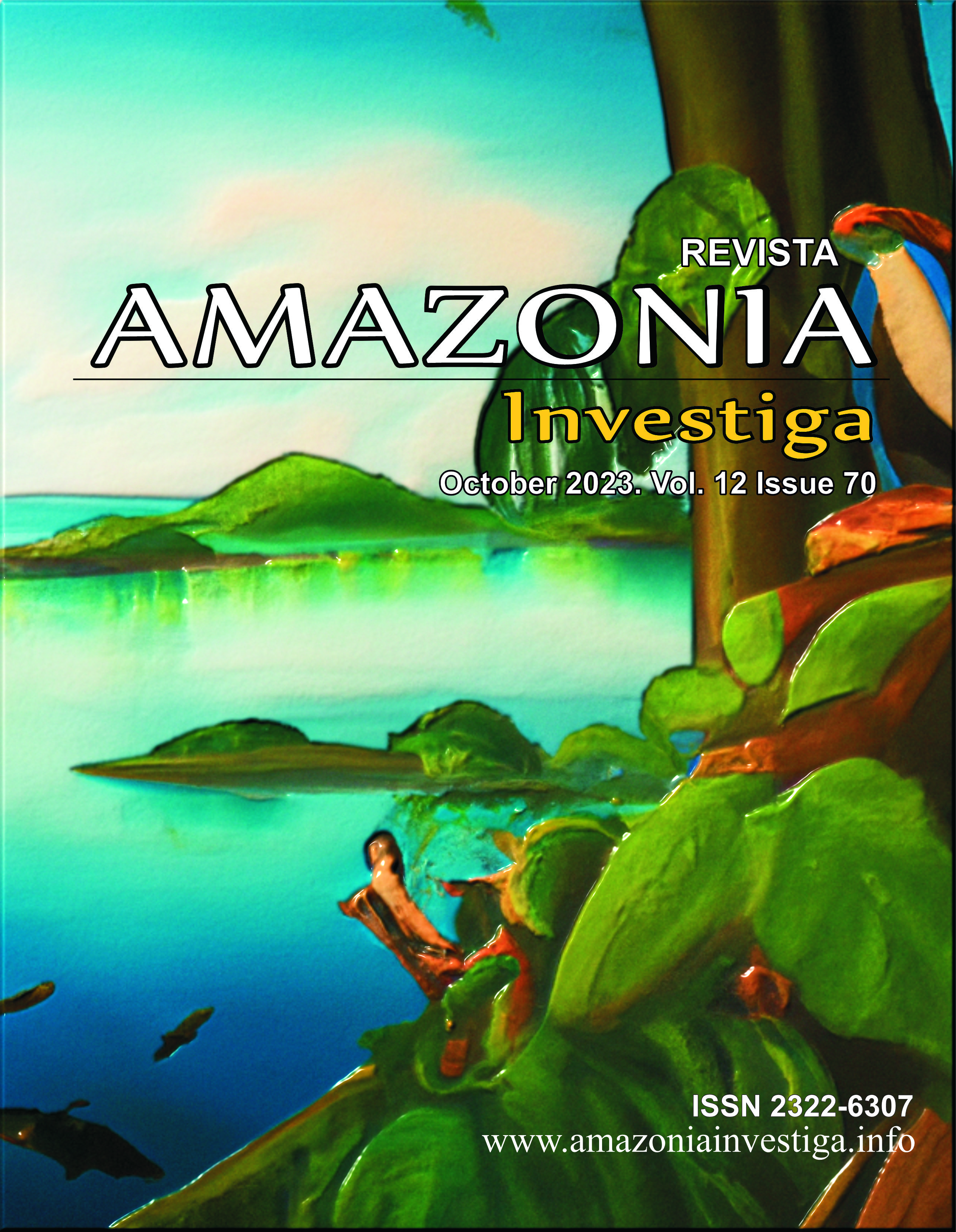Agonal concepts and communicative strategies in European and Ukrainian media discourses after February, 24
Publicado 2023-10-30
Palabras clave
- agonal concepts, concept, commutative strategies, media discourse, political discourse.
Cómo citar
Resumen
The article is devoted to the issue of agonal concepts and strategic communications as a result of the full-scale invasion of the Russian Federation. Considering the ongoing war, it is considered necessary to investigate the Ukrainian and European media discourse and strategic communications as a system consisting of invariant and variable components that can be projected in mass media messages, as well as the transformation of such a system. The purpose of the research is to carry out a comprehensive analysis of agonal concepts and communication strategies in European and Ukrainian media discourse after February 2022. The research methodology is the following methods: content analysis method, discourse analysis method, critical discourse analysis method, historical analysis method, cross-method - cultural comparative analysis, and sociological method. This thematic study examines the agonal concepts and strategies of communication in European and Ukrainian media discourses after February 2022. It is investigated which strategies prevail in the Ukrainian and European media fields. The study shows how political leaders and the media use different levels of engagement, commentary, and content to demonstrate strength, unity, and stability during times of significant international tension. Attention was also drawn to how messages from the Russian Federation affect the international agenda. It is concluded that the strategic use of communication can become a powerful tool in the conditions of international crises.
Descargas
Citas
- Alyahya, A.F. (2023). Critical Discourse Analysis of Newspaper Articles Declaring the Outbreak of War in Ukraine: The Washington Post vs. The Moscow Times. International Journal of Society, Culture & Language, 11, 47-59. https://acortar.link/G3izFx
- Baylor, P. (2022). Information Security Policy. Conditions, Threats and Implementation in the International Environment. Academic Bookstore Publishing, 28-30. Retrieved from https://acortar.link/OLxtYg
- Benabid, M. (2022). Communication Strategies and Media Influence in the Russia-Ukraine Conflict. Policy Brief, 25/22, 8-58. https://www.policycenter.ma/sites/default/files/2022-04/PB_25-22_Benabid%20EN.pdf
- Bozhuk, L. (2022). The essence of the “strategic communication” phenomenon. PR as a type of strategic management. Repository of the National Aviation University, 13, 16-28. https://er.nau.edu.ua/handle/NAU/53949
- Chaban, N. Zhabotynska, S., & Knodt, M. (2023). View all authors and affiliations What makes strategic narrative efficient: Ukraine on Russian e-news platforms. Sage Journals, 58(4), 37-60. https://journals.sagepub.com/doi/full/10.1177/00108367231161272
- Cornish, P., Lindley-French, J., & Yorke, C. (2011). Strategic communications and national strategy. Chatham House Report. https://www.chathamhouse.org/sites/default/files/r0911stratcomms.pdf
- Council of Europe. (2023). Supporting efficient communication strategies in Ukraine. Retrieved from https://acortar.link/48SbkZ
- Denisyuk, Zh. Z. (2021). Propaganda and counter-propaganda in the context of state information policy strategies. Academic notes of TNU named after V.I. Vernadskyi. Series: Public administration, 32(71), 2-38. http://www.pubadm.vernadskyjournals.in.ua/journals/2021/2_2021/10.pdf
- Ekman, I., & Nilsson, P.E. (2023). Ukraine’s Information Front: Strategic Communication during Russia’s Full-Scale Invasion of Ukraine. FOI. https://foi.se/restapi/report/FOI-R--5451--SE
- Guerrero-Castro, C.E. (2013). Strategic Communication for Security & National Defense: Proposal for an Interdisciplinary Approach. Quarterly Journal, 12(2), 27–51, Retrieved from https://acortar.link/Yf3EuK
- Horban, Yu. (2015). Information war against Ukraine and means of its conduct. Bulletin of the National Academy of Public Administration under the President of Ukraine, 1, 136-141. http://nbuv.gov.ua/UJRN/Vnadu_2015_1_21
- Kurnyshova, Y. (2023). Ukraine at War: Resilience and Normative Agency. Central European Journal of International and Security Studies, 17(2), 80-110. https://acortar.link/UYBZ9i
- Larsson, A., & Einarsson, F. (2023). Analyzing Zelensky's Twitter communication strategies during the ongoing conflict. Örebro University. https://acortar.link/aiEdjM
- Nato Strategic Communications Centre of Excellence. (2023). Kremlin Communication Strategy for Russian Audiences Before and After the Full-Scale Invasion of Ukraine. https://acortar.link/R3REyY
- OECD portal. (2022). Disinformation and Russia’s war of aggression against Ukraine. Retrieved from https://acortar.link/IfqLXz
- Parahonsky, B., & Yavorska, G. (2022). The generation of war from the impotence of peace: the semantic logic of war. National Institute for Strategic Studies, 2, 39-59. https://niss.gov.ua/en/node/4660
- Romanova, V. (2022). How to Promote Engagement by European and Ukrainian Local and Regional Authorities in Ukraine’s Post-war Reconstruction. Stockholm Centre for Eastern European Studies. Sceeus. https://acortar.link/zuIuO0
- Rubio, A.M. (2022). Zelensky’s discourse during the Russian invasion of Ukraine. Madrid: Universidad Pontificia. https://acortar.link/GLYfml
- Ryan, G.W., & Bernard, H.R. (2000). Data Management and Analysis Methods. NY: Sage Publications. https://acortar.link/16c4P0
- Selvarajah, S., & Fiorito, L. (2023). Media, Public Opinion, and the ICC in the Russia– Ukraine War. Journal Media, 4(3), 760-789. https://doi.org/10.3390/journalmedia4030048
- Shkvorchenko, N., Cherniaieva, I., & Petlyuchenko, N. (2021). Linguistic approaches and modern communication technologies in political discourses in Europe and the USA (contrastive aspect). Cuestiones Politicas, 39(70), 821-837
- Tasențe, T. (2023). Online Communication Strategy of World Political Leaders During The Ukraine Crisis (February 24 - December 24, 2022). Comparative Case Study: Joe Biden, Ursula Von Der Leyen And Jens Stoltenberg. Technium Social Sciences Journal, 39, 207-219. https://papers.ssrn.com/sol3/papers.cfm?abstract_id=4320303
- Tutar, H., & Bağ, S. M. (2023). Critical discourse analysis on leader statements in the RussiaUkraine War. Etkileşim, (11), 44-66. https://dergipark.org.tr/tr/download/articlefile/2684452
- Villar García, J.P., Quirós, C.T., & Soria, J.B. (2021). Strategic communications as a key factor in countering hybrid threats. European Parliamentary Research Service, 5, 24-45. https://acortar.link/GvCM48
- Yuskiv, B., Karpchuk, N.,& Pelekh, O. (2022). The Structure of Strategic Communications during the War: the Case-Study of the Telegram Channel Insider Ukraine. Politologija, 107(3), 20-52. https://www.redalyc.org/articulo.oa?id=694873801003











